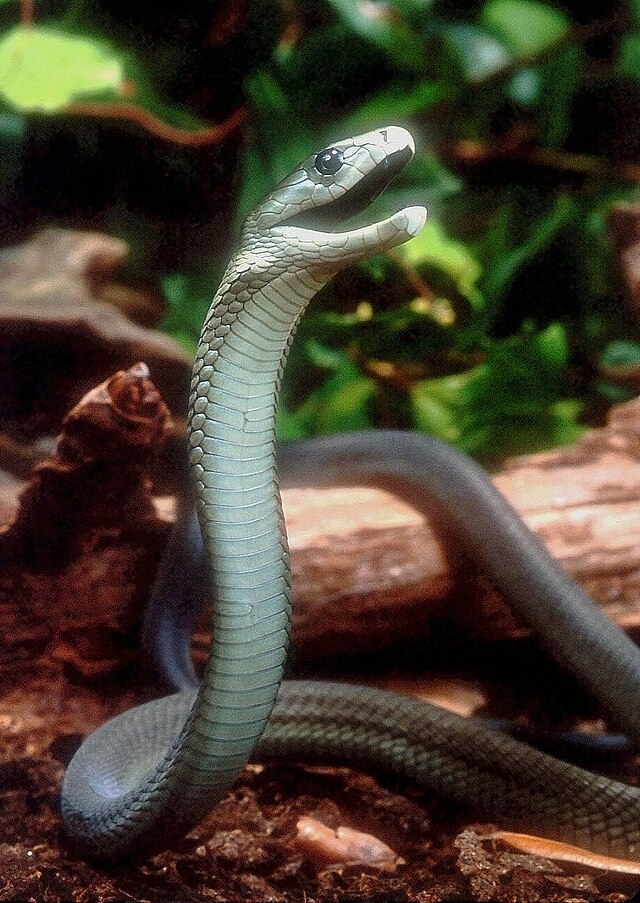Mamba
genus of reptiles From Wikipedia, the free encyclopedia
A mamba is a fast-moving venomous snake of the genus Dendroaspis (means "tree asp").[2] It belongs to the Elapidae family.
| Mamba | |
|---|---|
 | |
| Black mamba | |
| Scientific classification | |
| Domain: | Eukaryota |
| Kingdom: | Animalia |
| Phylum: | Chordata |
| Class: | Reptilia |
| Order: | Squamata |
| Suborder: | Serpentes |
| Family: | Elapidae |
| Subfamily: | Elapinae |
| Genus: | Dendroaspis Schlegel, 1848 [1] |
| Species | |
 | |
D. polylepis
D. angusticeps
D. viridis | |
They are native to Africa. The black mamba is one of the well-known species and is also the most feared. Other members include the eastern green mamba, western green mamba and Jameson's mamba.
Behavior

Most mambas are arboreal, meaning they live in trees. The only exception is the black mamba, which lives on land. All mamba species hunt during the day. They prey on birds, lizards and small mammals.
There are many stories of mambas chasing humans, but these snakes usually prefer to avoid contact with humans.[3][4] Humans are actually their main predators, rather than prey.[3]
Because mambas and cobras are in the same family, they share some similarities. Like the cobra, a mamba might display a hood when threatened. However, a mamba's hood is more narrow and is longer. A mamba usually opens its mouth when threatened, so they lean forward unlike the cobra which usually stands erect.
Venom
All mambas are very venomous. Their venom is mostly comprised of neurotoxins, which attack the nervous system. The venom can also contain cardiotoxins (which damage the heart muscle)[3][5] and fasciculins (which cause muscle twitches).[6][7]
The toxicity of the venom varies. Changes in the toxicity can even be caused by the weather or altitude.
All mamba species have similar venom, but the black mamba has the most toxic venom and is more aggressive.
References
Wikiwand - on
Seamless Wikipedia browsing. On steroids.
